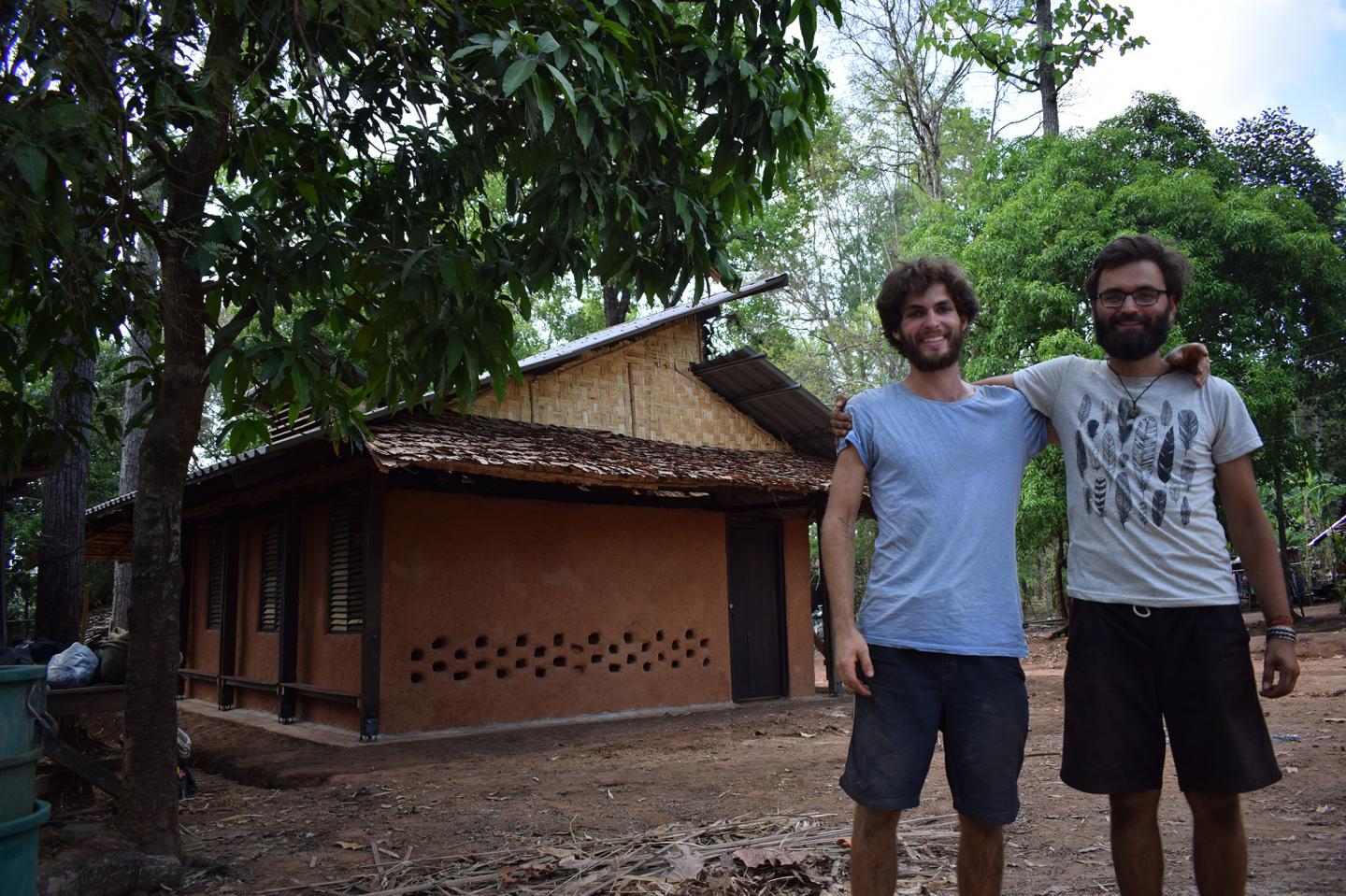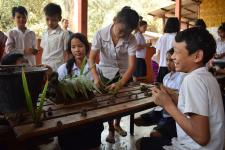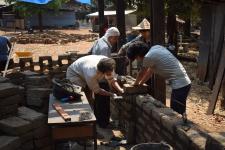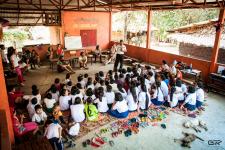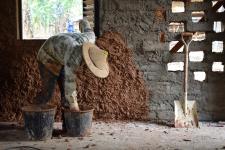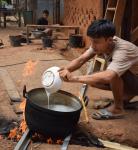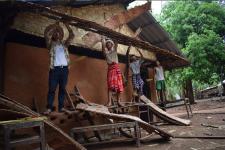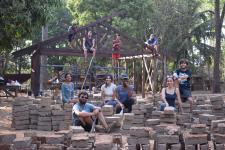The idea of our classroom building was quit easy. The use of local material like clay, bamboo and wood should give the users the option to repair it on his own. We don´t wanted to create a dependence in any kind. During planning and research we paid much attention on taking account of climatic, resource-related and cultural conditions to integrate the project into the existing demographic and social structures. Thailand is located in the tropical climate zone, which is why seasonal temperatures of up to 45 ° C, but also long periods of rain prevail. The building is adapted to the climatic conditions - through the use of traditional clay building techniques and cross-ventilation by means of two superiors and openings in the masonry, the interior temperature is acclimatized while still providing protection against heavy rainfall. Next to giving the P`Yan Daung School more necessary space, we wanted to give them a ecological usefull building.
2016
2017
The floor space amounts to about 50 square meters with 8 x 6m side lengths. At the highest point the building is about 5 meters. The masonry consists of self-made, sun-dried mud bricks, as well as three layers of plaster, which have added tapioca starch for better water resistance and adhesion.
Only local, low-cost resources were used to raise the building, so that the construction costs amounted to about 4000 €. In order to simplify the maintenance of the building, traditional or locally known construction and processing techniques have been used, e.g. Roof construction and cover (bamboo and leafs), the use of clay.
The whool building was constructed in 2 months by our student team and with the help of local workers and the schoolstaff.
The project was implemented by self-initiative of 10 volunteer students from the fields of architecture, design and monumental heritage. The team has members of different nationalities (India, Iran, Turkey, Thailand, Indonesia, Jamaica, El Salvador, Germany), thus combining intercultural perspectives and a multitude of professional experiences.
Close cooperation with the local population is essential.
Thats why teachers and students were also actively involved in the planning and design process (in various workshop formats, for example) in order to influence the design and conception as well as to identify with the project itself. Likewise, the school community was very much involved in the later building construction aswell.
